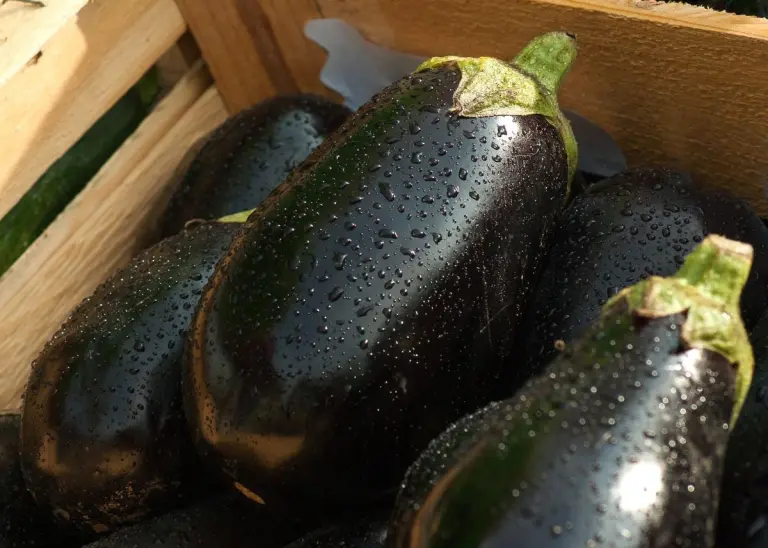Eggplants (or aubergines) are one of the first things we grew at Escape.Farm.
According to the interweb, eggplants are rich in fiber and antioxidants, and a serving of them can provide at least 5% of a person’s daily requirement of fiber, copper, manganese, B-6, and thiamine.
According to me, they’re super-tasty in a moussaka.
While the leaves/flowers can be toxic due to solanine (the same toxic present in ‘green’ potatoes) –which has given rise to them losing favor among some interwebbers– the fruit is safe to consume both raw and cooked.
The eggplant that we grow is the heirloom variety �Black Beauty�. These produce a large, dark purple/black fruit with a fleshy white inside and thin skin. Plants will commonly grow to a height of 2�3 feet.
Sowing And Growing Eggplants
To achieve the longest growing season possible –which for us can extend into December– we sow our eggplant seeds indoors sometime in early January, in trays of homemade compost placed in a heated poly tunnel.
Seeds can 7-14 days to germinate, and they’ll need a bit of warmth — a soil temperature of 60+F (15+C), ideally.
We transplant our eggplants once at least 6 leaves have appeared. This usually ensures a well-developed root system. We’ll move the trays out of the poly tunnel during the day in the week up to transplanting to allow the plants to acclimatize.
We only transplant once the threat of frosts has passed, eggplants –as with most young plants– do not fair well in the cold. Also, be sure to pick a spot in full sun, which is required for optimal growth.
Spacing
We plant our young eggplants out in beds of rich, homemade compost approximately 20 inches (50cm) apart, in rows spaced 32 inches (80cm) apart. Larger spacings may encourage larger croppings, but we have achieved very decent yields with 20″ and 32″.
Key jobs including keeping the bed free of weeds, to save soil nutrients and moisture.
A natural mulch, such as decaying leaves, can help with both of these tasks. Mulch also brings the added bonus of warming the bed (if not applied too early as this runs the risk of locking in winter’s cold).
Eggplants have grown best for us when watered well but infrequently — again: a good layer of mulch is key.

Harvesting Eggplants
Depending on the variety and growing conditions, eggplants will mature around the 100-day mark (from transplanting). For best taste, however, we harvest ours at around 70-80 days, or whenever the fruit is glossy, firm, with a dark purple gleam, which usually occurs when the fruit is around 6-9 inches (15-23cm) in length.
Tip: Don�t aim for the biggest fruit or you�ll sacrifice flavor.
Carefully cut the the eggplant off at the base of the stem.

Storing Eggplants
Refrigerated eggplants (with good air circulation) should two weeks. Those left on the side will often perish within just two days. Eggplants can be stored in the freezer, though you’ll want to cook it first.
To do this, simply prick the fruit with a fork and roast in the oven. Cooking until the eggplant collapses and then scooping out the insides when cool is your best bet. This flesh can then be stored in freezer backs or containers.
EGGPLANT RECIPE HERE>>>


